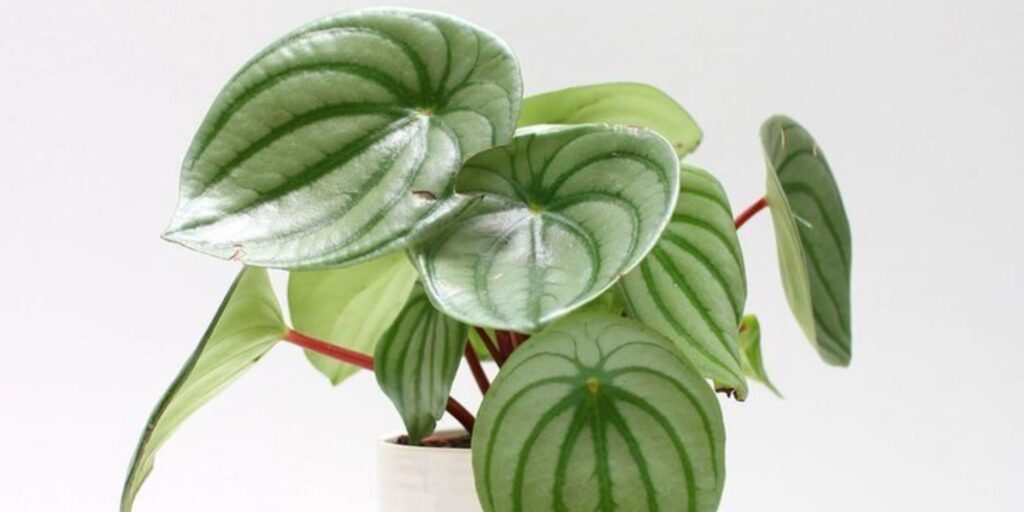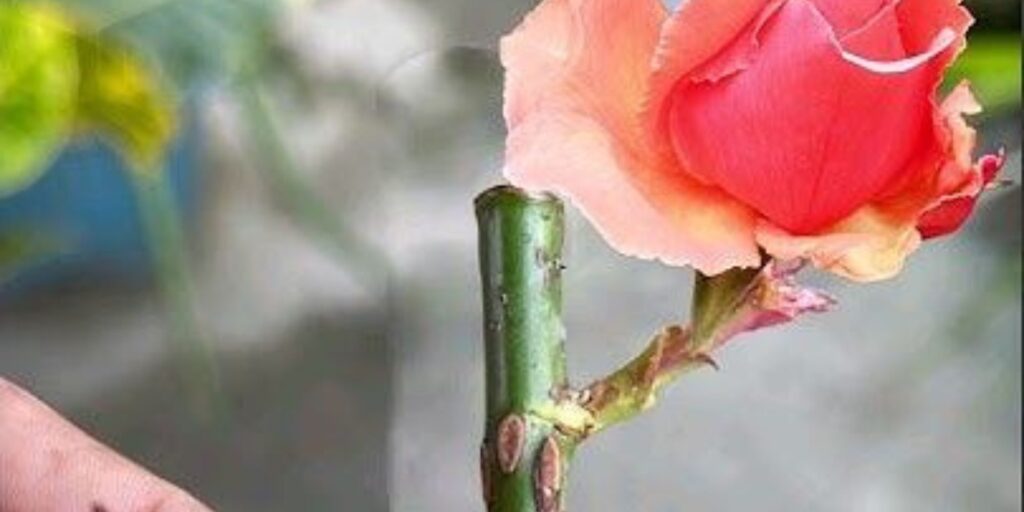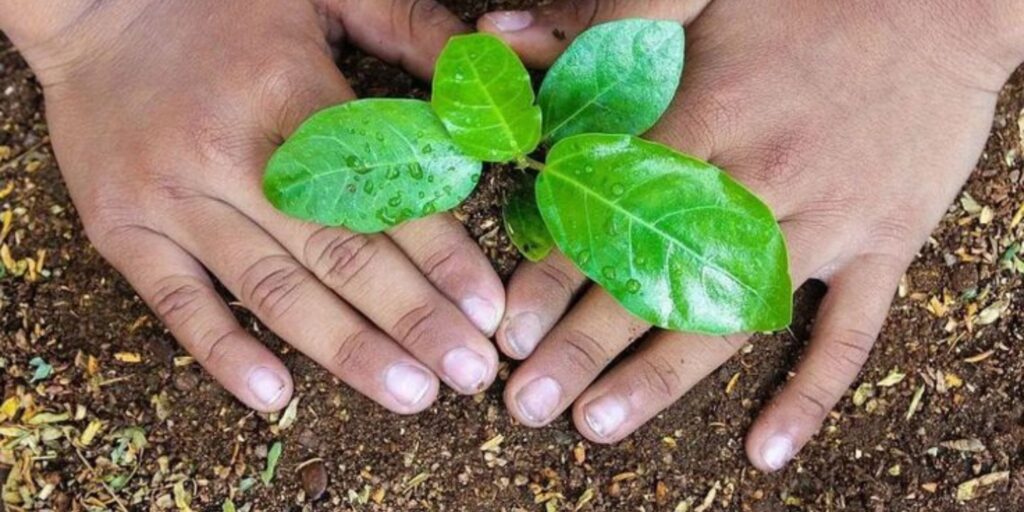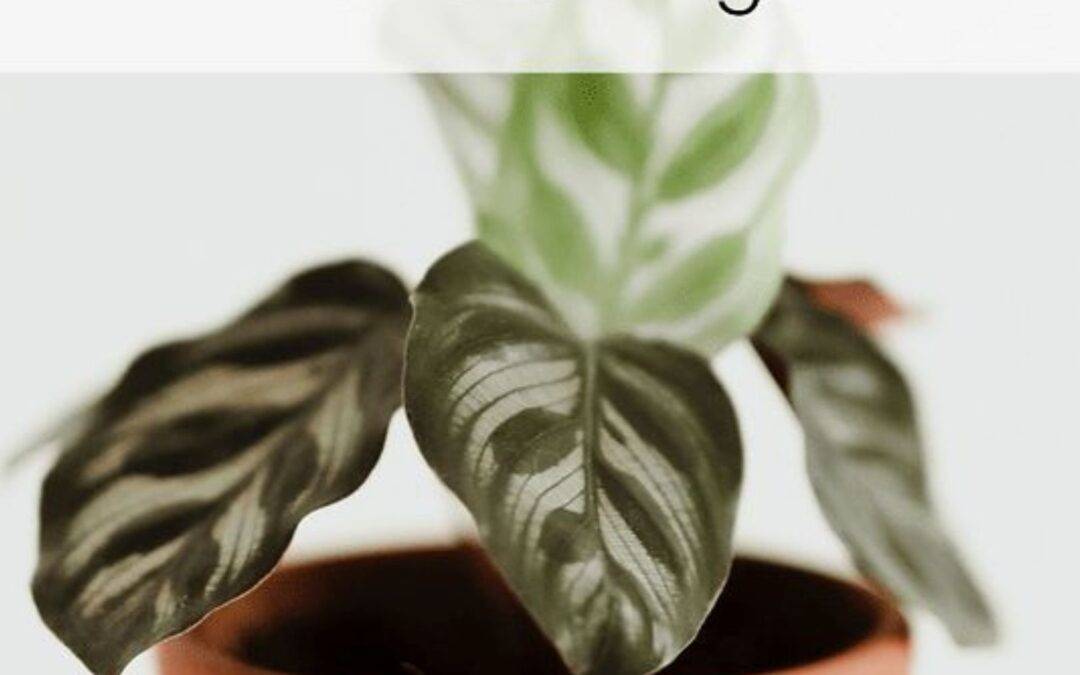Why Your Plant Isn’t Growing and How to Fix It
If your plant is not growing, several factors could be contributing to the issue. First, check the amount of sunlight your plant receives. Plants need the right amount of light to thrive, and too much or too little can stunt growth. Next, examine the soil quality. Poor soil drainage or nutrient deficiencies can prevent plants from growing properly. Overwatering or underwatering can also be problematic, as it can lead to root rot or dehydration. Additionally, the temperature and humidity of your environment play a crucial role in plant health. Ensure your plant is in a space with stable, suitable conditions. Lastly, pests or diseases could affect growth, so inspect your plant for any signs of damage. By adjusting factors like light, water, and temperature, you can create an optimal environment for your plant and encourage healthy growth.
Introduction

It can be frustrating and discouraging when your plant isn’t growing as expected. However, identifying the underlying causes can help you resolve the issue and encourage healthy growth. Just like any living organism, plants have specific requirements for proper growth. Factors such as sunlight, water, soil, and temperature all play crucial roles in a plant’s well-being. When these conditions are not met, it can stunt growth or cause other problems. In this article, we’ll discuss common reasons plants may struggle to grow and offer practical solutions to address these challenges. By making the necessary adjustments, you can create an environment where your plant thrives, leading to healthier and more vibrant growth.
Why my Snake Plant is not Growing
If your snake plant isn’t growing, several factors could be causing the issue. First, check the light conditions. Snake plants thrive in bright, indirect light but can tolerate low light. However, too little light can slow down their growth. Make sure your plant isn’t in direct sunlight, as it can scorch the leaves. Next, examine your watering habits. Overwatering or underwatering can cause growth problems. Water your snake plant when the soil is completely dry, and ensure the pot has good drainage to avoid root rot. The soil should be well-draining, too. Temperature is another important factor; snake plants prefer warm conditions and should not be placed in cold drafts or areas with fluctuating temperatures. Lastly, check for pests or diseases, which can stunt growth. By adjusting light, water, temperature, and soil conditions, you can help your snake plant grow healthy and strong.
Why my Tomato Plant is not Growing
If your tomato plant isn’t growing, several factors could be at fault. First, check the amount of sunlight your plant receives. Tomato plants require at least 6-8 hours of direct sunlight daily for healthy growth. Without enough light, they may become leggy and weak. Next, consider your watering habits. Overwatering or underwatering can lead to stunted growth. Make sure the soil stays consistently moist but not waterlogged, and always allow the soil to drain well. The soil type also matters—tomatoes prefer rich, well-draining soil that is slightly acidic. Additionally, temperature plays a crucial role; tomatoes thrive in warm temperatures, ideally between 70-85°F (21-29°C). If the temperature drops below 50°F (10°C), growth may slow. Lastly, check for pests or diseases, which can hinder growth. By adjusting sunlight, water, soil, and temperature, you can encourage your tomato plant to grow strong and healthy.
Why my Rubber Plant is not Growing
If your rubber plant isn’t growing, several factors could be causing the issue. First, ensure your plant is getting enough light. Rubber plants thrive in bright, indirect light but may struggle in low-light conditions. Too much direct sunlight can scorch the leaves, so find a balance. Next, evaluate your watering routine. Overwatering or underwatering can stunt growth. Water when the top inch of soil feels dry, but make sure the pot has proper drainage to prevent root rot. The soil should be well-draining and rich in nutrients to support healthy growth. Temperature also plays a role; rubber plants prefer warm, stable temperatures and can suffer if exposed to cold drafts or sudden temperature changes. Lastly, check for pests, as they can damage the plant and affect growth. By adjusting light, water, temperature, and soil conditions, your rubber plant can grow stronger and healthier.
Why my Rose Plant is not Growing

If your rose plant isn’t growing, several factors may be affecting its development. First, ensure it receives enough sunlight. Roses need at least 6 hours of direct sunlight daily to thrive. Without sufficient light, growth can slow down. Next, examine your watering routine. Overwatering or underwatering can stress the plant, leading to poor growth. Roses prefer evenly moist soil, but the soil should drain well to prevent root rot.
Additionally, the type of soil matters—roses thrive in well-draining, slightly acidic soil. Fertilization is another key factor; roses benefit from regular feeding with a balanced fertilizer during the growing season. Temperature also plays a role; roses flourish in moderate to warm temperatures and can struggle in extreme heat or cold. Finally, check for pests or diseases, which can hinder growth. By providing the right care in terms of light, water, soil, and nutrition, you can help your rose plant grow healthy and strong.
Why my ZZ Plant is not Growing
If your ZZ plant isn’t growing, several factors could be slowing its development. First, check the light conditions. ZZ plants thrive in low to bright, indirect light but may struggle in direct sunlight, which can scorch the leaves. Ensure the plant is placed in a spot with sufficient light but avoid harsh sun. Next, evaluate your watering habits.
Overwatering is a common problem for ZZ plants and can lead to root rot. Water the plant when the soil is dry to the touch, and ensure the pot has good drainage. ZZ plants prefer well-draining soil to prevent moisture buildup. Temperature also matters; ZZ plants prefer warm conditions and can suffer in cold drafts or extreme temperatures. Additionally, ensure the plant is in a pot that allows its roots to grow freely. Check for pests or diseases, as they can affect growth. By adjusting light, water, and temperature, your ZZ plant can thrive.
Why my Jade Plant is not Growing
If your jade plant isn’t growing, several factors might be at fault. First, check the amount of sunlight your plant receives. Jade plants need bright, direct light to thrive. Lack of sunlight can cause slow growth or leggy stems. Next, examine your watering routine. Overwatering is a common issue for jade plants and can lead to root rot. Let the soil dry out completely between waterings, and ensure the pot has good drainage to prevent excess moisture. Soil type also matters; jade plants prefer well-draining, sandy soil that doesn’t hold too much moisture. Temperature plays a role too; jade plants thrive in warm conditions and may struggle in temperatures below 50°F (10°C). Lastly, check for pests or diseases, as they can slow growth. By adjusting sunlight, watering, and temperature, you can help your jade plant grow healthy and strong. Regularly pruning can also encourage more growth.
Why my Chilli Plant is not Growing
If your chili plant isn’t growing, several factors could be affecting its development. First, ensure it receives enough sunlight. Chili plants require at least 6-8 hours of direct sunlight daily to thrive. Without adequate light, they may become leggy and weak. Next, examine your watering habits. Overwatering or underwatering can stress the plant and hinder growth. Keep the soil moist but not waterlogged, and always ensure the pot has good drainage to avoid root rot. Soil type also plays a key role; chili plants prefer well-draining, fertile soil. Temperature is crucial as well; chili plants need warmth, ideally between 70-85°F (21-29°C). Cold temperatures can stunt growth. Lastly, check for pests or diseases, which can damage the plant and hinder its growth. By adjusting sunlight, water, soil, and temperature, your chili plant should start growing strong and healthy, producing vibrant, flavorful peppers.
Why Is my plant not Growing But Not Dying
If your plant isn’t growing but isn’t dying either, several factors could be at play. First, check the light conditions. Many plants need specific amounts of sunlight to grow properly. Too little or too much light can hinder growth. Ensure your plant gets the right light intensity, typically bright, indirect light for most indoor plants. Next, evaluate your watering routine. Overwatering or underwatering can cause a plant to remain stagnant. Water only when the top of the soil feels dry, and ensure the pot has proper drainage to avoid root rot. Soil quality is another crucial factor. Plants need well-draining, nutrient-rich soil to grow effectively. Temperature also affects growth; most plants prefer consistent, moderate conditions. Lastly, consider the plant’s age and type. Some plants grow slowly and might take time to show noticeable growth. Adjust light, water, and soil conditions to create the optimal environment for your plant to flourish.
Why Is My Plant not Growing New Leaves
If your plant isn’t growing new leaves, several factors could be preventing growth. First, check the light conditions. Many plants need bright, indirect light to stimulate new growth. If your plant is in a low-light area, it may struggle to produce new leaves. Next, evaluate your watering habits. Overwatering or underwatering can stress the plant and halt new growth. Ensure the soil is consistently moist but not soggy, and that the pot has good drainage. Soil quality is also important; plants need well-draining, nutrient-rich soil to support healthy growth. Temperature can play a role as well; some plants require warm conditions to grow new leaves. Avoid placing your plant in areas with fluctuating temperatures or cold drafts. Additionally, ensure your plant is not root-bound, as this can restrict growth. By adjusting light, water, soil, and temperature, you can encourage your plant to grow new leaves and thrive.
Why are my outdoor Plant not Growing
If your outdoor plants aren’t growing, several factors could be limiting their development. First, check the light conditions. Most outdoor plants need ample sunlight to thrive, with some requiring up to 6 hours of direct sunlight each day. If your plants are in shaded areas, growth may be stunted. Next, evaluate your watering habits. Overwatering or underwatering can cause stress and halt growth. Water plants when the soil feels dry, but ensure proper drainage to avoid waterlogging. Soil quality is essential; outdoor plants need nutrient-rich, well-draining soil to grow well. Consider testing your soil’s pH and nutrient levels to ensure it’s suitable for the plant type. Temperature plays a role too; some plants may not grow in extreme heat or cold. Lastly, check for pests or diseases, as they can stunt growth. By adjusting light, water, soil, and temperature, you can help your outdoor plants thrive.
Outdoor Plant Not Growing But Not Dying.
If your outdoor plant isn’t growing but isn’t dying either, several factors might be at play. First, check the light exposure. Many plants need direct sunlight for several hours daily. If the plant is shaded too much, it may struggle to grow, even if it’s not dying. Next, evaluate your watering routine. Overwatering or underwatering can cause the plant to remain stagnant. Make sure the soil is well-draining and water only when it feels dry to the touch.
Soil quality is another key factor; your plant may not be thriving if the soil lacks nutrients. Consider adding compost or organic matter to enrich the soil. Temperature also matters; if the plant is not suited for the current climate or seasonal changes, it may stop growing temporarily. Lastly, check for pests or diseases. Even if the plant doesn’t show clear signs of damage, hidden pests can affect growth. Adjust care accordingly to help the plant thrive.
Why is my Plant not Growing Minecraft
If your Minecraft plant isn’t growing, there could be several reasons behind it. First, ensure the plant is placed in the correct environment. Many plants, like saplings or crops, need specific light levels to grow. If the light is too low, they won’t grow, so make sure the area is well-lit. Check the soil as well; crops require tilled soil, while trees need enough space and a clear area to grow. If you’re trying to grow crops like wheat, carrots, or potatoes, ensure they are watered or planted next to hydrated soil blocks. In some cases, the plant might need a certain amount of time to grow.
Plants in Minecraft don’t grow instantly, and the process can take some in-game time. Lastly, ensure you are not overloading the area with too many plants or obstructions, as this can slow or stop growth. Adjusting these factors can help your Minecraft plants thrive.
Why is my Seeding Growing Slowly
If your seedlings are growing slowly, several factors could be limiting their growth. First, check the light conditions. Seedlings need plenty of light to grow strong. Insufficient light can lead to weak, slow growth. Ensure they receive at least 12-16 hours of light per day, either from natural sunlight or grow lights. Next, evaluate the temperature. Most seedlings thrive in warm conditions, typically between 65°F and 75°F (18°C to 24°C). Too cold or too hot a temperature can stunt their growth. Soil quality also plays a role; seedlings need well-draining, nutrient-rich soil to grow properly. If the soil lacks essential nutrients, consider adding compost or organic fertilizer. Watering habits are crucial too. Overwatering can suffocate the roots, while underwatering can cause dehydration. Make sure the soil is moist but not waterlogged. By adjusting light, temperature, soil, and watering, you can help your seedlings grow stronger and healthier.
Plants do not grow well in Soil.
Plants do not grow well in soil that lacks proper drainage or essential nutrients. Clay-heavy soil tends to hold water, leading to root rot and poor oxygen circulation, which prevents plants from developing healthy root systems. On the other hand, sandy soil drains too quickly, making it difficult for plants to retain the moisture and nutrients they need. Soil that is too compacted also restricts root growth and water absorption, slowing plant growth. Additionally, highly alkaline or acidic soils can affect the plant’s ability to absorb nutrients. Plants prefer slightly acidic to neutral soil with a pH level between 6 and 7. If the soil lacks essential nutrients like nitrogen, phosphorus, and potassium, plants may struggle to grow or show signs of nutrient deficiencies. To improve soil quality, consider adding organic matter, compost, or soil amendments that balance pH and improve drainage for better plant growth.
How to Fix Stunted Growing in Plants

To fix stunted growth in plants, start by checking the light conditions. Plants need proper light for healthy growth; if the plant is not getting enough, move it to a sunnier spot or use grow lights. Next, evaluate watering habits. Overwatering or underwatering can stress the plant and cause stunted growth. Water only when the top of the soil feels dry, ensuring the plant has good drainage to avoid root rot. Soil quality also plays a role; plants need nutrient-rich, well-draining soil.
If the soil is poor, mix in compost or organic matter to provide essential nutrients. Ensure the plant is in the right-sized pot to allow for healthy root growth. Temperature also matters; avoid placing the plant in extreme heat or cold, as it can affect growth. Lastly, check for pests or diseases, which can stunt development. By adjusting light, water, soil, and temperature, you can revive your plant’s growth.
Conclusion: 15 Tricks to Accelerate Plant Growth
To accelerate plant growth, start by providing the right amount of sunlight. Most plants thrive with 6-8 hours of direct or bright indirect light daily. Next, water consistently but avoid overwatering. Make sure the soil dries out slightly between waterings. Use well-draining soil to prevent root rot and improve aeration. Add organic fertilizers like compost or liquid feed to supply essential nutrients. Prune dead or damaged leaves to encourage new growth. Maintain the proper temperature for your plant type, avoiding drastic changes in weather. Ensure plants have enough space to grow by repotting when necessary. A regular misting schedule can help maintain humidity levels for tropical plants. Keep the plant clean by removing dust from leaves to improve photosynthesis. Consider using growth boosters like Epsom salt or seaweed extracts. Lastly, check for pests and diseases regularly to ensure your plants stay healthy and continue to thrive.

